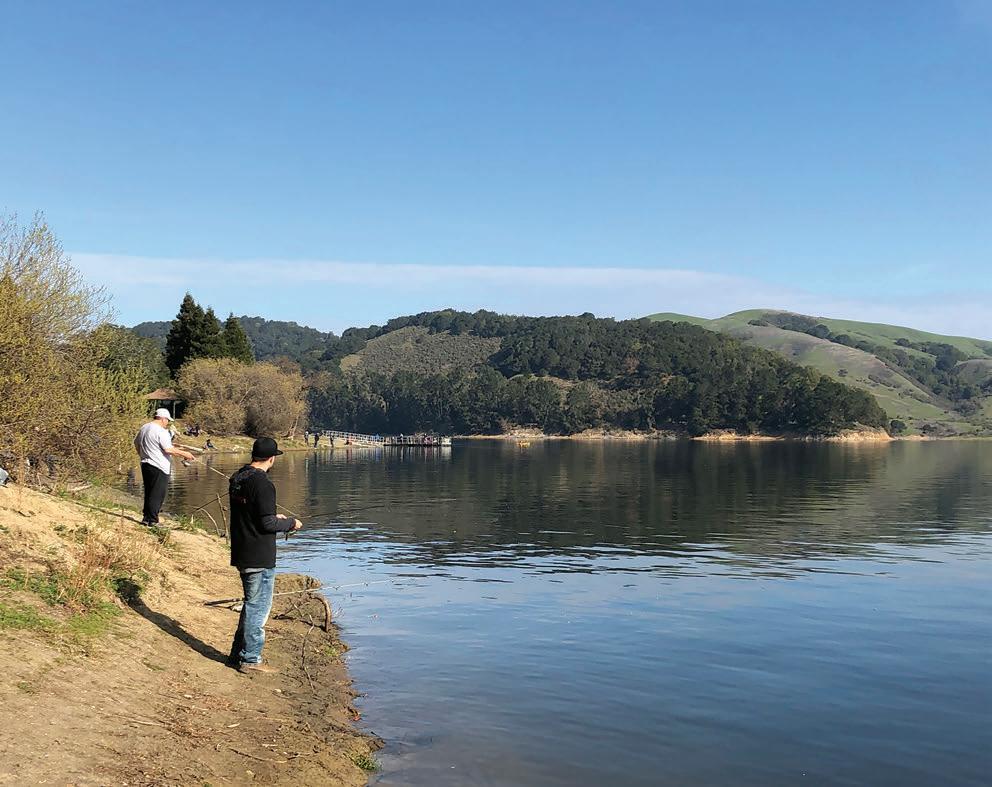
17 minute read
San Pablo Reservoir trout tease on
SKUNKED AT SAN PABLO
Dozens of anglers came out on an unseasonably warm February Saturday morning to fish San Pablo Reservoir, but the trout weren’t biting. (CHRIS COCOLES)
PLENTY OF ANGLERS GO HOME EMPTY-HANDED ON GORGEOUS WINTER DAY
By Chris Cocoles
IL SOBRANTE–We wondered if we were leaving too late. Myself, my sister Charlene, brother-in-law Alan and their two dogs last month planned a Saturday morning trip across San Francisco Bay to San Pablo Reservoir, a favorite trout fishing hole in the East Bay.
We were planning to get up relatively early – I suggested a 6:30 a.m. alarm and getting on the road by 7 or so for the 44-mile drive from San Mateo – but Alan thought we should leave even earlier. Charlene and I convinced him to get a little extra sleep. We were in the car by around 7:15.
As it turns out, it really didn’t matter on this day.
HIGH HOPES The last time I fished here was last summer (California Sportsman, August 2019). I didn’t have high hopes on that day, which was unseasonably hot and save for one nibble, the catfish weren’t interested in my chicken livers. Plus there was hardly anyone else on the water, so expectations were low.
But this time, I was anticipating a good trout bite. San Pablo held its opener the weekend before and with the lake hosting the first of the yearlong NorCal Trout Angler Challenge held at various lakes, the fishing looked like it was trending up. Facebook posts showed happy anglers with rainbows
The fishing might be slow, but the facilities here are top notch. (CHRIS COCOLES)
after the lake received a few stockings prior to opening weekend.
By the time we got to the lake, purchased our daily permits and picked up some garlic-flavored PowerBait to fish with, it was well after 8 and the shoreline just south of the store was full of fishing rods protruding from the bank. We had to walk down the shore a bit before we finally found a small area between some guys, one of whom was kind enough to move a little up the beach to give us some more room. I felt good about our chances.
But then I asked them if they’d had any luck.
“Nothing so far,” one told us. “We’ve been here about an hour.”
So much for stressing about getting to the lake earlier and potentially
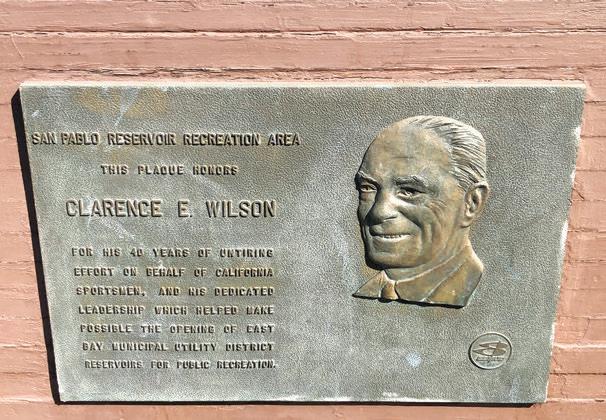

A plaque in front of the reservoir’s store honors local Clarence Wilson, who helped pave the way for the agency that oversees the area, the East Bay Municipal Utility District. (CHRIS COCOLES)

Weekend Launch Hours: 5:30am–4pm Monday–Friday Launch Hours: 6am–4pm Hours of operation during fi shing season One of the last true do-it-yourself boatyards. We provide our customers with a one stop boatyard that can answer all your boating questions, and provide you with the highest quality in Marine Supplies & Service.

PORT SAN LUIS SPORTLAUNCH 805-595-7895

BEDLINERS | ACCESSORIES PROTECTIVE COATINGS
WHEN PROTECTION MATTERS MOST, LINE-X IT.

California
Line-X of Placerville 161 Fair Lane Placerville, CA 95667 (530) 295-1813 www.linexofplacerville.com
Boats of all kinds were out on San Pablo on a perfect day to be on the water. (CHRIS COCOLES)

Nala the puggle didn’t seem to mind that the fish weren’t biting. (CHRIS COCOLES)

The lake just had its opener earlier in February and more trout plants are scheduled. But the birds probably had a more productive morning than any anglers did during this Saturday. (CHRIS COCOLES)
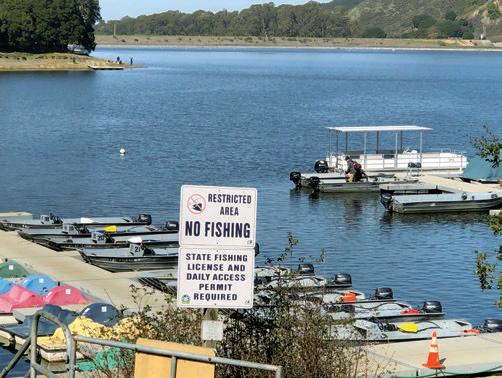
There are some great deals to be had at the lake for boat rentals, particularly during the week when the fishing pressure is lighter. (CHRIS COCOLES)


Alan King, the editor’s brother-in-law, takes in the scene. (CHRIS COCOLES)
CALIFORNIA COSTA MESA Maurer Marine 873 W 17th St (949) 645-7673 www.maurermarine.com

VENTURA Pacific Marine Repair 2807 Palma Dr. (805) 658-1709 www.pacificmarinerepair.com
OREGON EUGENE Maxxum Marine 1700 State Hwy. 99 N. (541) 686-3572 www.maxxummarine.com
missing out on the action.
As we chatted with those guys while none of us were getting as much as a bite, they told us about their struggles to get through the parking lot when the recreation area opened at 6:30.
“We were waiting in line for about 30 minutes to get in,” one told us.
I should have known it was a slow day when I saw four different setups on their rods. One rig looked like it had a Berkley Mice Tail and another hook had a glob of the company’s iconic PowerBait that we were also casting out. Another guy kept busy throwing what appeared to be a Kastmaster or a similar spoon.
When no trout wanted to play with our PowerBait, Alan walked back to the store and came back with a jar of Berkley Gulp! What’s that old line about desperate times and desperate measures?
ENJOYING THE SCENE As we were told, it was believed that just one fisherman on the bank that morning had managed to land a trout. “It seems like the best time to fish here is on days when they plant fish,” our neighbor told us.
About 30 minutes passed before we gathered up our stuff, got the dogs some water and then headed down to quaint downtown Orinda and found a hofbrau with some outdoor tables to grab a sandwich for lunch.
Still, despite the lack of action there’s something to be said for a beautiful February Saturday that makes California such a great place to be during the dog days of winter.
The editor’s fishing rod didn’t get any action on this day … (CHRIS COCOLES)
Granted, the Bay Area and particularly the nearby San Joaquin Valley are in dire need of some rain, causing the dreaded “d” word to be uttered again around the Golden State.
But even with a possible drought looming we could count our blessings to be savoring a beautiful and warm sun-splashed Saturday while other parts of the country were shoveling snow and layering up to combat low temperatures. It was the kind of day that made getting skunked a lot more tolerable. CS
Editor’s note: For more information on San Pablo Reservoir, check out its East Bay Municipal Utility District website (ebmud.com/recreation/east-bay/sanpablo-reservoir) and like at facebook.com/ SanPabloReservoir.


… but the same can be said for just about everyone filling the shoreline. Word got out that just one angler scored a trout in the morning. (CHARLENE KING)
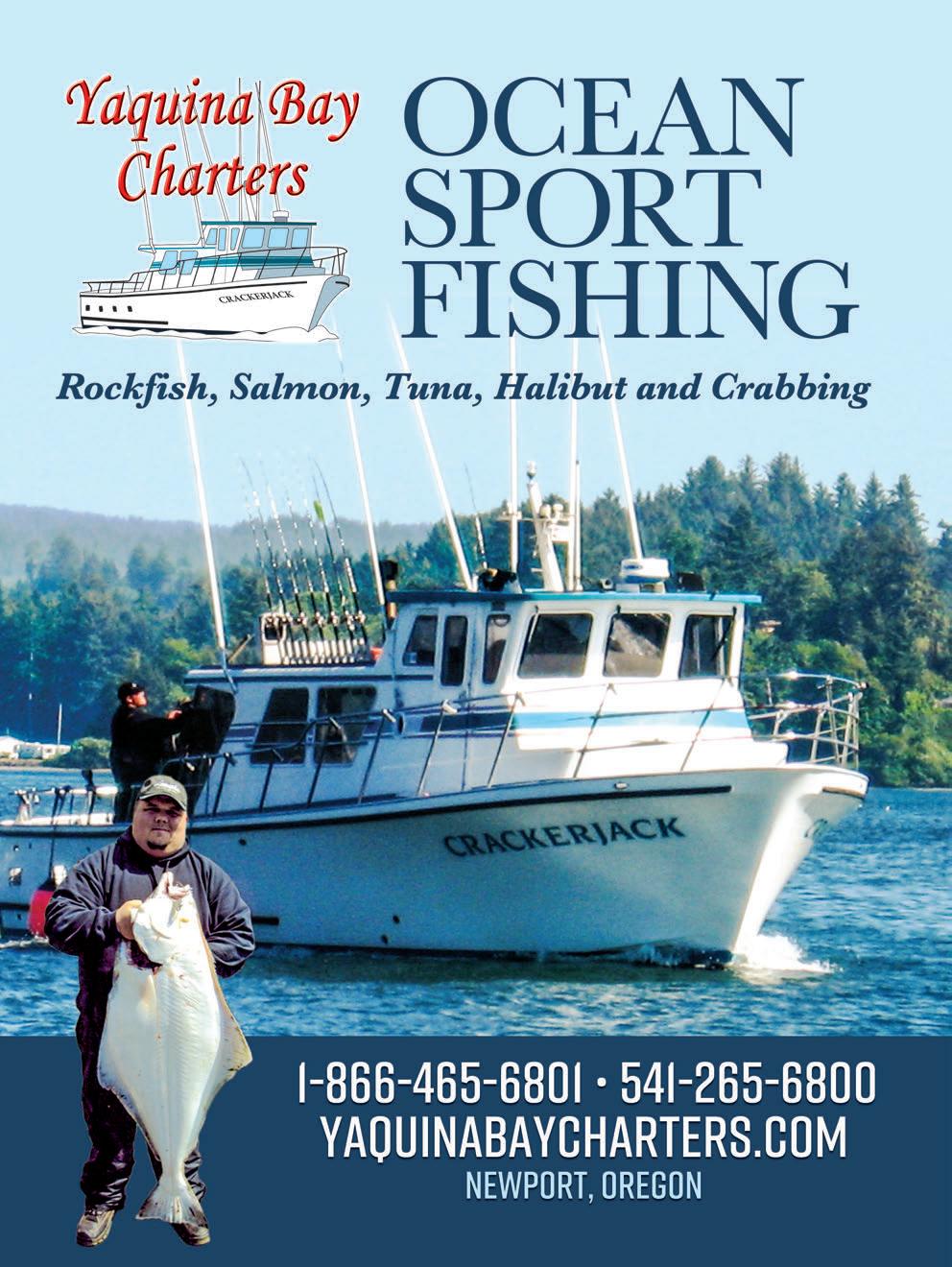

FROM FIELD...

Decoys can play a big part in your early season turkey hunting success. This tom couldn’t resist a mating hen decoy, crafted by Dave Smith Decoys. (SCOTT HAUGEN)
BE COY FOR TURKEYS DECOY TIPS FOR BAGGING A SPRING TOM
By Scott Haugen T wo hours into the morning hunt, a tom finally gobbled back in response to every sound my buddy Brandon threw out. We barely made it to cover when the tom was on top of us. I quickly shouldered the gun, placed the bead on the bird’s colorful head and filled my first tag of the year.
Brandon, a very accomplished turkey hunter himself, used only one call. “I like to keep it simple, and I don’t want to educate the birds,” Brandon shares.
“Anywhere I’ve hunted where there are a lot of birds, I’ve found the key to success comes in catching them in the right mood, not hammering them with 20 different calls (and)
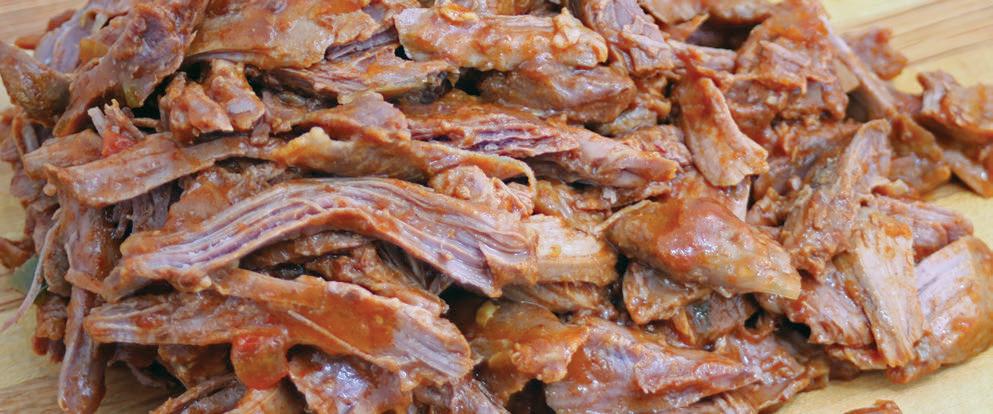
... TO FIRE
Slow-cooked turkey meat will fall right off the bone, giving you plenty of options for a great wild game meal. (TIFFANY HAUGEN)
GO LOW AND SLOW FOR TURKEY GOODNESS
By Tiffany Haugen
We’ve smoked, roasted, braised and stewed wild turkey legs and thighs. Many recipes, countless methods and one way to cook this flavorful dark meat still stands above them all: slow cooking.
Because turkeys spend most of their time running around on the ground, their legs and thighs are sinewy. Unless you want to spend a lot of time separating all of the meat from the tendons and ligaments on an uncooked bird, toss these bird parts into the slow cooker and let the cooking do the work. The meat stays moist, absorbs flavors and becomes incredibly tender when cooked “low and slow.”
Surprisingly, an average tom will yield over 1½ pounds of cooked leg and thigh meat. Once cooked, this meat is very versatile and can be added to many foods – from spaghetti to burritos to pulled porkstyle sandwiches.
Two to three turkey legs and thighs 1 cup chopped onion One 6-ounce can tomato paste 1½ cups white wine, beer or apple juice 2 tablespoons soy sauce 2 tablespoons minced garlic 1 teaspoon ground black pepper Additional seasonings of choice
Place turkey meat in slow cooker or Crock-Pot. Add onion. In a medium bowl mix remaining ingredients until fully combined. Add mixture to the cooker.
Cook on high heat four to five hours or until meat falls from bones. Remove turkey and cool until it’s able to handle. Pull meat from bones, tendons and ligaments. Add additional seasonings if desired.
Editor’s note: Tiffany Haugen is a cookbook author specializing in game and fish recipes. For personally signed copies of her popular Cooking Game Birds or her other cookbook titles, visit tiffanyhaugen.com.
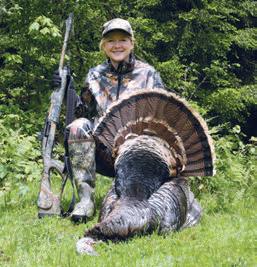
Flavor combinations are endless. Sometimes I just open my refrigerator/pantry and grab a jar or can of something – barbecue, enchilada, taco, curry or marinara sauce – and toss that into the slow cooker. Once the meat is cooked, I add a few fresh herbs at the end and serve over noodles or rice or wrap in a warm tortilla.
Depending on your flavor preferences, give one of these combos a try: 2 cups salsa, one 4½-ounce can diced green chilis or jalapeños; 1 cup hoisin sauce, 1 cup chicken broth and 1 cup sliced green onions (add onions after removing meat from bones); 1 can coconut milk, ¼ cup red curry paste and 3 inches minced fresh ginger, 2 tablespoons fish sauce, 3 cups Bloody Mary mix and 1 cup each of diced onion, carrot and celery. –TH VERSATILE SLOW COOKER SEASONINGS

SPRING OUTLOOK STRONG FOR CALI GOBBLERS I ’m in no way a professional wildlife biologist, but I’d be willing to bet that predicting the status of wild populations always involves an element of best guess.
Weather patterns change. The unforeseen, e.g. fire, happens. The wildlife manager’s crystal ball isn’t always clear, no matter how badly we consumptive users wish it to be. In fact, it’s often quite cloudy; still, these professionals do the very best they can with the information they’ve afforded when we, the hunting community, put them on the proverbial spot and ask, “So; what can we expect to see this season?” A native Californian, Kevin Vella is one such professional. A graduate of Humboldt State, Vella, a one-time migratory bird biologist with the California Waterfowl Association, now serves as the Pacific Coast district biologist for the National Wild Turkey Federation.
Vella was preparing for the federation’s huge annual conference in Nashville, Tennessee (February 12-16), but he was kind enough to take a few minutes and talk to me about what folks might see as they hit the field this spring.
It’s no secret that California offers some phenomenal spring turkey hunting. It’s one of the few states I haven’t hunted yet, but it’s definitely on that old bucket list. Maybe a combination spring gobbler/hog hunt is in order? “California saw an average to above average hatch in 2018,” said Vella, “with good spring moisture and a (fairly mild) winter, all of which amounted to good recruitment. It was the same story in (2019). However, we did have a lot of rain late in the northern part of California well into May, and that worried me a bit about the possibility of nest abandonment. But everything was late,” he said.
“And I thought we might have a poor hatch. But I saw poults showing up in July, and we had really high poult-to-hen ratios (observed). And great recruitment. So I think you’re going to see a lot of jakes (yearold gobblers) in 2020 in Northern California and southern Oregon.” –MD Johnson
attempting to change their mood.”
Brandon’s philosophy makes sense. If birds aren’t reacting, he simply moves to another place. His calls are always subtle.
“If they’re not ready to come in, I
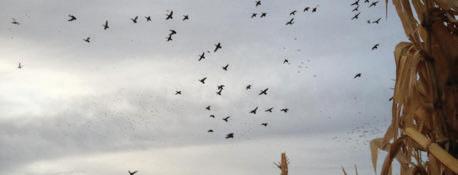

don’t want to force things,” Brandon says. “I’ll mark where the birds are and come back another day.”
Two weeks later I was back with Brandon, hunting the same ridge we had started on on opening morning. Again, we used a decoy and only his diaphragm call. Within five minutes a lone tom with a 10-inch beard came gobbling and strutting into the decoy. The shot was simple.
Brandon smiled. “Yep, he was
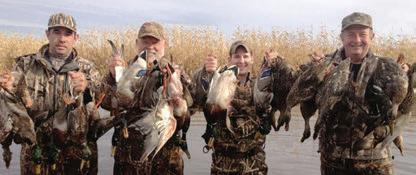
Also Available: Hunts in Saskatchewan, Canada!


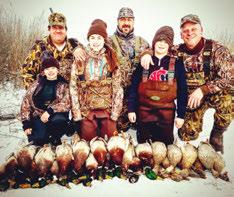
• Mallard Corn Pond Hunting on 16 Private Ponds • Freeze Up No Problem! Aerators & Springs in Most Ponds Average 6.1 Ducks Per Person in the 2018-19 Season!!

TALKIN’ DECOYS Decoys can play a big part in turkey hunting success. In regions with high tom densities, I’ve observed fights among mature birds throughout much of the season, and it’s especially high during the first half of the season. Some hunters like using tom decoys that are in half-strut or a walking position, as this sends the message that they are interested in the hen (decoy), but not overly confident. This semisubmissive decoy position can be an open invitation for an aggressive tom to come in.
There are tom decoys with red, white and blue heads and ones with nearly all white heads. Brightly colored heads send the message, “Hey, look at me. I’m the dominant tom and I know it.”
A white-headed tom is one looking for a fight, and if he’s strutting at the same time, he’s saying, “Hey, hen; look at me. I’m big, tough and mad, and to you other toms: I’m ready to fight!”
I’ve had the best success using white-headed tom decoys in conjunction with hen decoys that are in a submissive, breeding posture. I think this combination is effective because it sends the message that a hen is ready to breed, and that an aggressive tom is ready to mount her, but also willing to take on any challengers.
ADD A REAL FAN One thing I do with all my strutting tom decoys is replace the synthetic factory tail with a real fan I’ve made. I like a real tail fan. Just like on a real strutting tom, it doesn’t reflect light and the feathers move in the slightest breeze.
No matter how you plan on hunting turkeys this spring, it’s a major benefit to first try and figure out the birds’ daily patterns. Find where turkeys are roosting, where they fly down, where they spend the day and how they re-enter the roost. Observe the flock dynamics and see who is running the show.
Some flocks travel more than others during the course of a day, and knowing where they go – both when and why – is a bonus. Note their food sources as well as where they might get water or retreat to when it gets hot.
KEEP YOUR DISTANCE When patterning birds, do so from as far away as possible with binoculars or a spotting scope, so as not to get busted. Disturbing a flock can throw them off their routine for a few days. By that time a hen’s breeding status may change, which could result in the birds leaving your area.
Trail cameras are also a valuable tool when patterning turkeys. Not only will the cameras reveal where birds are, but they’ll show how many
PrOlix is a penetrating solvent/dry lube product that was lab-developed and tested by law enforcement, military and commercial shooters over many years. The citrus-based biodegradable cleaner, pioneered in 1995, is the first successful “all in one” gun care product, now deemed “Bio-Technology.” Their recyclable (strain and reuse) products are made of 89 percent or greater renewable resources, a true commitment to sustainable practices and caring for the environment. As such, the USDA has listed PrOlix as a BioPreferred Product since 2012.
The solvent “goes on wet, cleans, bonds, and the lube turns dry to the touch.” It removes carbon, copper, lead, shotgun plastic residues, and black powder. PrOlix will not damage wood, freeze, or flash off, and it can be used for commercial and industrial applications as well.
To complement the PrOlix Cleaner/Lubricant (Dry Tech) line, shooters can use the equally superior “gun-oil and grease replacer” PrOlix Xtra-T Lube for a total care product. PrOlix, which will be celebrating its 33 rd anniversary soon, announced at the 2019 Shot Show that they would be shipping out their products with a new look around the middle of the year. Along with the new look, due to many requests, their PrOlix TGCP in the 16-ounce-PRO with an adjustable nozzle and trigger-sprayer cap will also change to an easier-to-handle bottle. PrOlix

GUN CARE All In One Step
No product on the market works like PrOlix and we’ve guaranteed it for 32 Years!

DRY LUBRICANT • Improves accuracy • Prevents jamming • Won’t flash off • Will not freeze • Non-hazardous • Reduces fouling • Won’t harm wood, primers, old guns, or stain clothing! • Bio preferred by USDA • Non-petroleum
Goes on wet, cleans, bonds, turns DRY!
Our Dealers offer the BEST and that’s PrOlix ®
ProChemCo LLC 801-569-2763 800-248-LUBE (5823) www.prolixlubricant.com

birds there are, what they’re doing and what time of day they’re around. Keep in mind that as turkey flock dynamics change throughout the spring, so does turkey behavior; thus their daily routine.
This spring, pay close attention to what the birds are telling you. Learning from turkeys is the best education a hunter can receive, and there’s no other way to accomplish this than being in the field as much as possible. CS
Author Scott Haugen was pleased with this early-season tom. There’s nothing like being in the spring turkey woods and having toms run to your calls, gobbling every step of the way. (SCOTT HAUGEN)
Editor’s note: For signed copies of Scott Haugen’s best-selling book, Western Turkey Hunting: Strategies For All Levels, visit scotthaugen.com.




